Planning for a journey to Antarctica might seem overwhelming when considering what essentials to bring.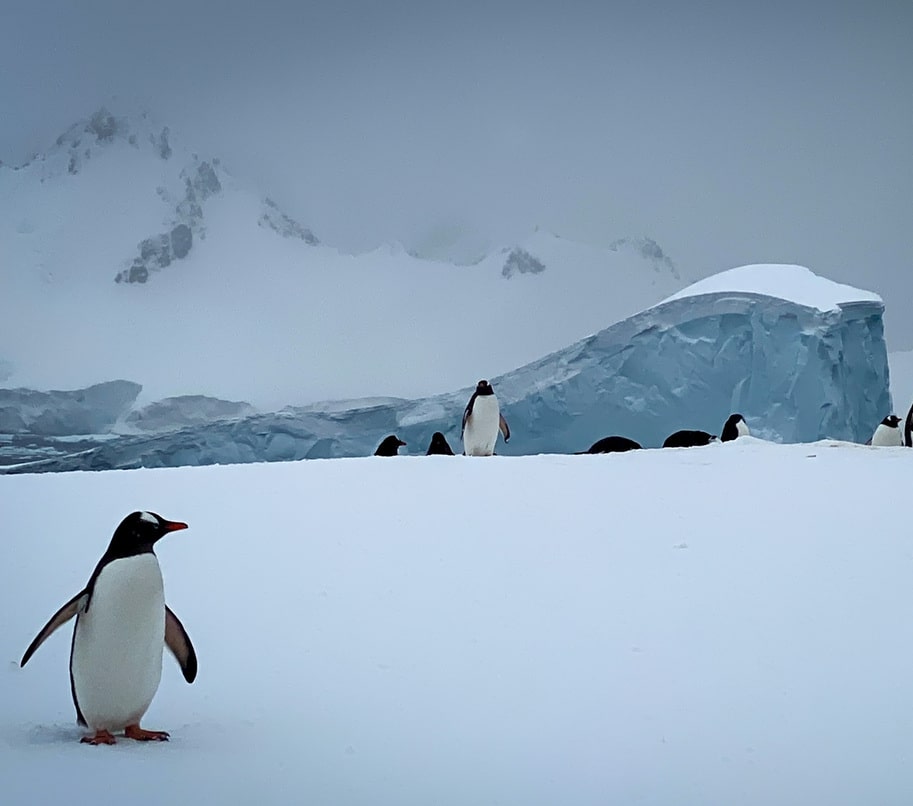
Fortunately, when joining our Antarctica tour, there’s no requirement for fancy attire during meals or lectures aboard the expedition ship; nevertheless, we do recommend that you equip yourself with appropriate clothing and gear if you choose to engage in the (optional) outdoor activities available.
Below are suggestions on how to pack for our trip to Antarctica. In general, consider bringing warm clothes that are moisture-wicking and wearing them in layers.
UPPER BODY
Light Merino wool top – You’ll want to start with a thin, warm shirt as an underlayer. A lightweight Merino wool shirt is ideal.
Heavy Merino wool top – On top of that, you’ll want to wear a warmer long-sleeve shirt. Again, Merino is best. It’s recommended that you bring at least two (one that’s 160 grams and the other a little heavier at 200 grams) so you’ll always have a dry one and you can choose the weight based on the outside temperature.
Fleece jacket – A mid- to heavy-weight jacket will keep you warm onshore as well as on the ship.
Windproof/waterproof shell jacket – This is a required piece of clothing for Zodiac rides, which means you must have this to partake in any on shore activities. One with a hood is advised but not required.
Puffy coat – Having a down (or synthetic) parka that comes past your waist will keep you very warm during the Zodiac trips to shore as well as onshore when you’re not as active. This will also come in handy when you’re outside on the ship’s deck, where you may find yourself often (for whale watching, penguin spotting and iceberg viewing).
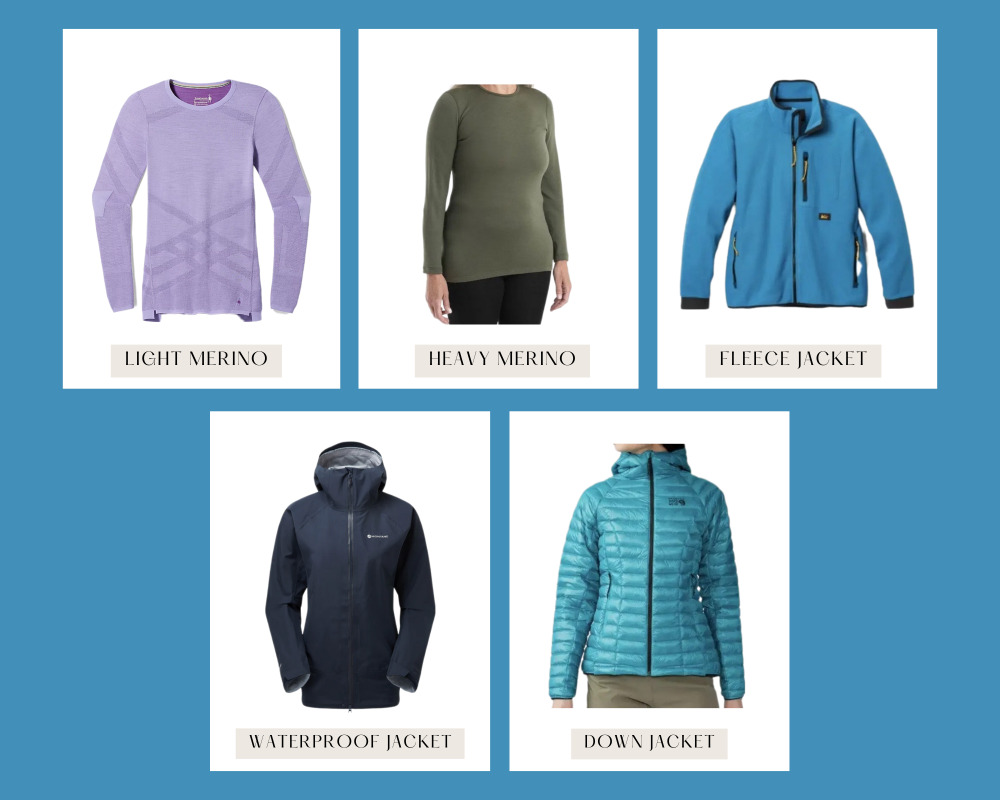
LOWER BODY
Thermal tights – Just like your underlayers on top, your long underwear should be Merino wool or similar to keep you warm. These should also be moisture-wicking.
Pants – A pair of heavy-ish pants is advised and should be worn over your long underwear.
Shell pants – A pair of waterproof pants large enough to fit over your long underwear and your pants is a must as they will keep you dry from the snow and protected from the wind.
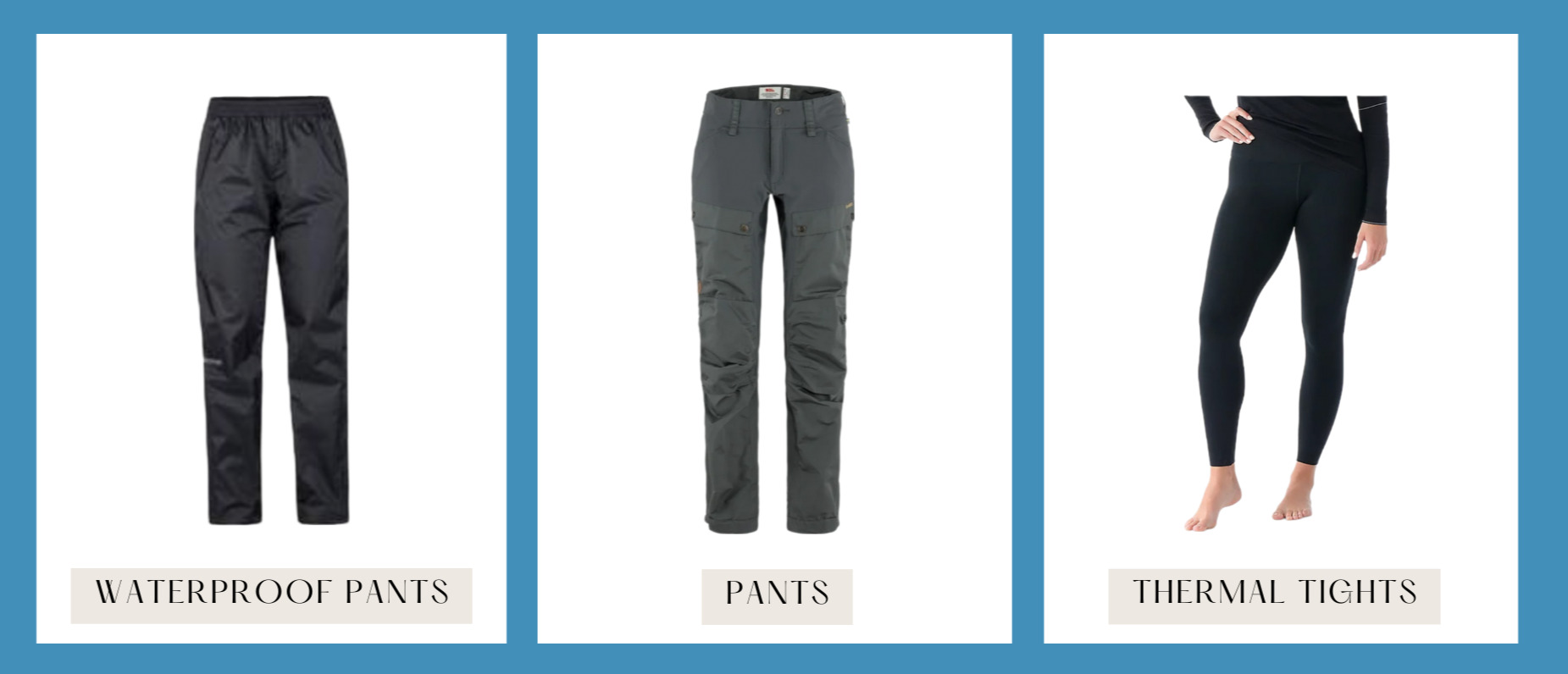
FEET
Warm socks – It’s advised to bring at least two pairs of thick, wool hiking socks to keep your feet warm.
Liner socks – It’s best to bring two pairs of liner socks. You’ll only be wearing one at a time under your heavier socks, but the second pair is a backup if one pair gets wet.
Shoes/boots – Waterproof (such as Gore-Tex) and warm shoes or winter boots are recommended. These should have non-slip soles and are to be worn on the ship. You’ll find yourself wanting to spend time outside on the deck for wildlife viewing and photographing the beautiful landscape. (Note that rubber boots (wellies), will be provided by the ship for the week. These are the only shoes you’ll be wearing on shore.)
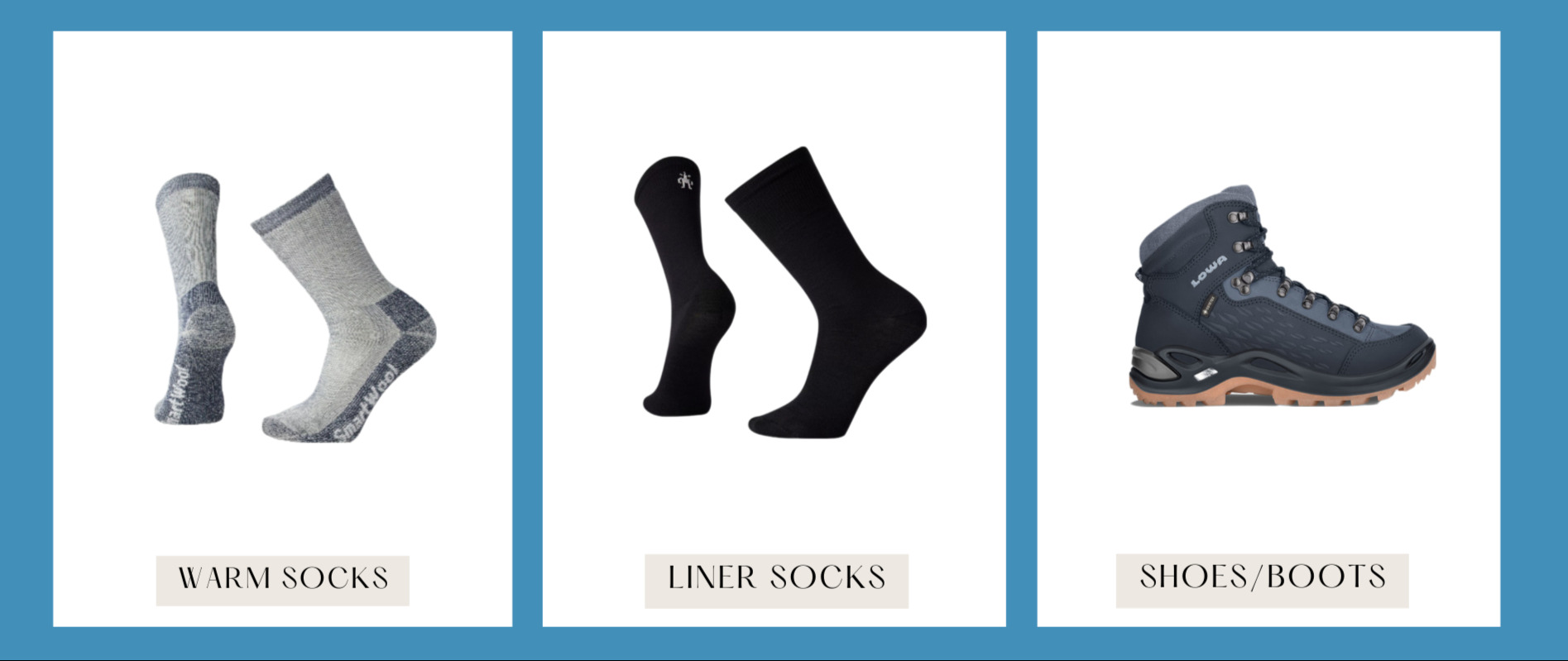
HANDS
Heavy gloves – You’ll want a pair of heavy, waterproof shell gloves or mittens.
Glove liners – Underneath your heavy gloves, a pair of Merino wool liner gloves is recommended. These will help keep your hands warm.
Hand warmers – If your hands are prone to getting cold, consider bringing some hand warmers to place inside your gloves.
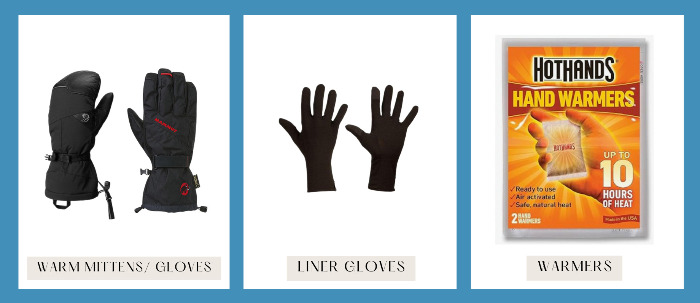
HEAD
Balaclava – This (often wool) headpiece is worn over your head and covers everything but your eyes. It’s a great all-in-one item that will protect your neck, face and head from the cold and wind.
Buff – This is a cloth tube that is worn over your head and sits on your neck. While there are many ways to wear it (i.e., it could be pulled over your head for warmth), these are generally made of thin cloth and are best for providing some added protection around your neck.
Hat – A warm wool or fleece hat with a windproof underlayer (an added piece of cloth that will protect your head) is advised against the cold and wind.
Glacier goggles – These are, simply put, fancy sunglasses. 😁 What makes them special is that they have side covers that provide added protection from the sun (which can be quite strong) and the reflective snow.
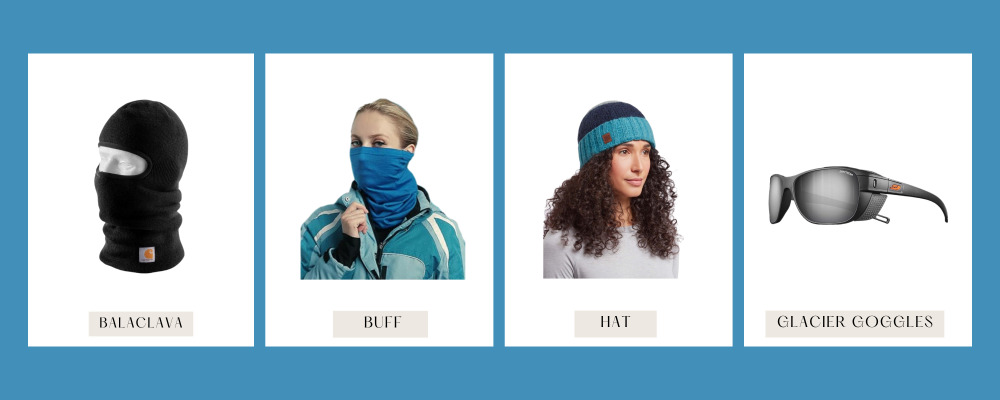
ACCESSORIES
Backpack – You’ll need a 15 – 25L backpack for carrying items to shore. You’ll need something that can accommodate a water bottle, camera/phone and outer layers should you take them off during activities.
Dry bag for backpack OR waterproof covering – It’s very important to keep the items in your backpack dry. You can do so by keeping the items in a dry bag that goes inside the backpack or you can use a waterproof covering on the outside. Both work well, but items will be more accessible if they are in the dry bag rather than underneath the covering.
Trekking poles – These are not required, but if you’d like to have something to keep you extra steady while walking through the snow on shore, consider bringing a collapsible pair of trekking poles.
Headlamp – While it will be light during most hours of the day/night, you will want a headlamp in the slight chance that we get caught on shore overnight. There may be an opportunity to camp overnight, in which case you might need this as well.
Water bottle – Please have a refillable water bottle with you for onshore excursions. This will also come in handy on the expedition ship.
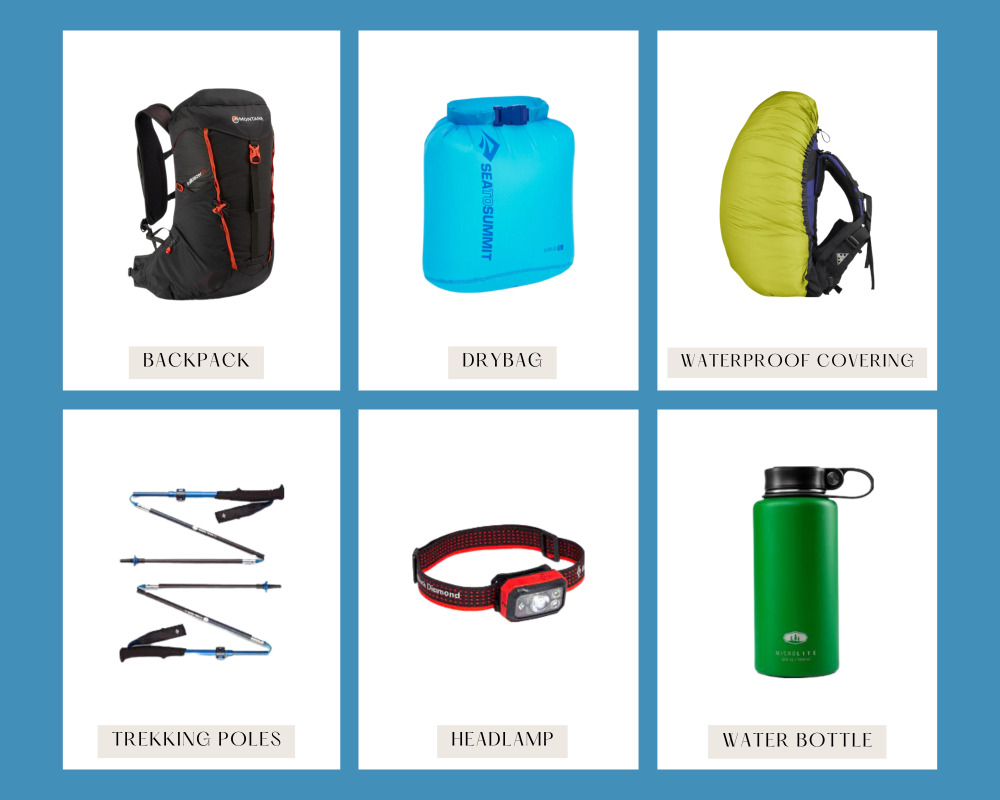
As they say, there is no such thing as bad weather, there’s just unsuitable clothing.
Come prepared with the suggestions above and you’re sure to have a much more enjoying trip to Antarctica!
 Traditional Finnish Foods
Traditional Finnish Foods